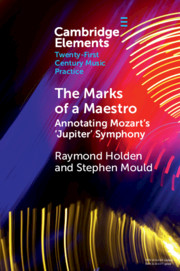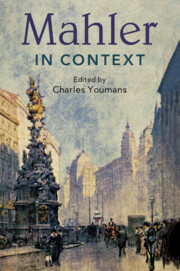Refine search
Actions for selected content:
15 results
Chapter 19 - In Praise of Pierre
- from Part III - Engagements with the Post-War Generation of Composers
-
-
- Book:
- Boulez in Context
- Published online:
- 08 July 2025
- Print publication:
- 24 July 2025, pp 200-212
-
- Chapter
- Export citation
Chapter 30 - Boulez on Record
- from Part V - Multiple Activities
-
-
- Book:
- Boulez in Context
- Published online:
- 08 July 2025
- Print publication:
- 24 July 2025, pp 312-319
-
- Chapter
- Export citation
Chapter 36 - Boulez
- from Part VII - Legacy
-
-
- Book:
- Boulez in Context
- Published online:
- 08 July 2025
- Print publication:
- 24 July 2025, pp 370-377
-
- Chapter
- Export citation
Chapter 2 - Boulez’s Musical Education
- from Part I - Finding One’s Way
-
-
- Book:
- Boulez in Context
- Published online:
- 08 July 2025
- Print publication:
- 24 July 2025, pp 16-26
-
- Chapter
- Export citation
Chapter 35 - Remembering Pierre
- from Part VII - Legacy
-
-
- Book:
- Boulez in Context
- Published online:
- 08 July 2025
- Print publication:
- 24 July 2025, pp 363-369
-
- Chapter
- Export citation
Chapter 7 - Conducting Choreography
- from Part II - Conducting
-
-
- Book:
- Leonard Bernstein in Context
- Published online:
- 06 April 2024
- Print publication:
- 28 March 2024, pp 51-57
-
- Chapter
- Export citation
Chapter 21 - Omnibus
- from Part IV - Bernstein as Musical and Cultural Ambassador
-
-
- Book:
- Leonard Bernstein in Context
- Published online:
- 06 April 2024
- Print publication:
- 28 March 2024, pp 175-182
-
- Chapter
- Export citation
Chapter 27 - Aaron Copland
- from Part V - Connections
-
-
- Book:
- Leonard Bernstein in Context
- Published online:
- 06 April 2024
- Print publication:
- 28 March 2024, pp 227-235
-
- Chapter
- Export citation
Chapter 10 - Conductor/Pianist
- from Part II - Conducting
-
-
- Book:
- Leonard Bernstein in Context
- Published online:
- 06 April 2024
- Print publication:
- 28 March 2024, pp 75-84
-
- Chapter
- Export citation
Chapter 35 - Conducting Legacy
- from Part VI - The Legacy
-
-
- Book:
- Leonard Bernstein in Context
- Published online:
- 06 April 2024
- Print publication:
- 28 March 2024, pp 297-303
-
- Chapter
- Export citation
Chapter 7 - Composing in England
- from Part II - British Musical Life
-
-
- Book:
- Benjamin Britten in Context
- Published online:
- 31 March 2022
- Print publication:
- 21 April 2022, pp 63-70
-
- Chapter
- Export citation

The Marks of a Maestro
- Annotating Mozart's ‘Jupiter' Symphony
-
- Published online:
- 13 February 2021
- Print publication:
- 11 March 2021
-
- Element
- Export citation

Mahler in Context
-
- Published online:
- 18 December 2020
- Print publication:
- 19 November 2020
Chapter 6 - Becoming a Conductor
- from Part I - Formation
-
-
- Book:
- Mahler in Context
- Published online:
- 18 December 2020
- Print publication:
- 19 November 2020, pp 48-55
-
- Chapter
- Export citation
Chapter 19 - Mahler’s Press from London to Los Angeles
- from Part III - Creation
-
-
- Book:
- Mahler in Context
- Published online:
- 18 December 2020
- Print publication:
- 19 November 2020, pp 162-170
-
- Chapter
- Export citation
